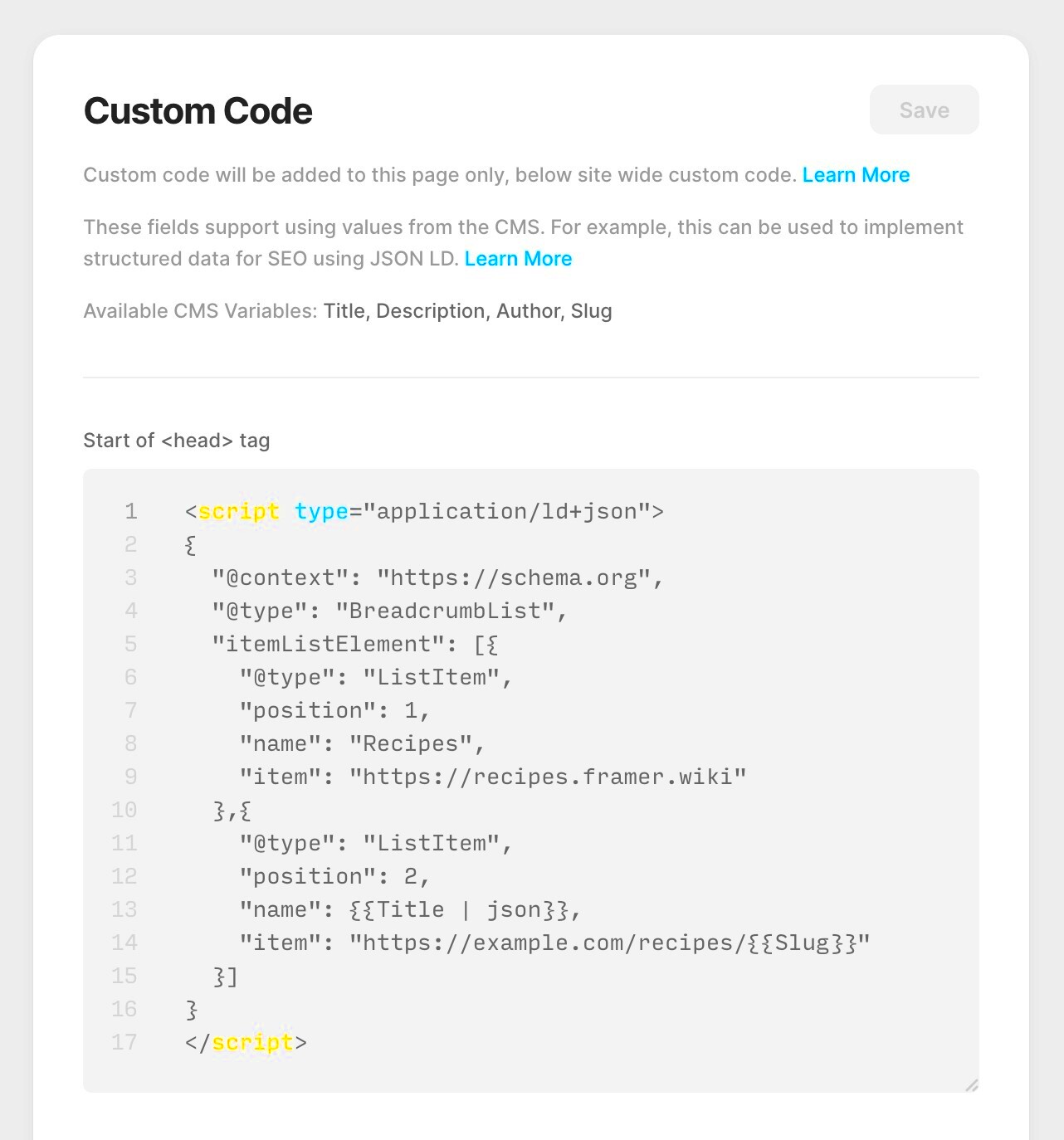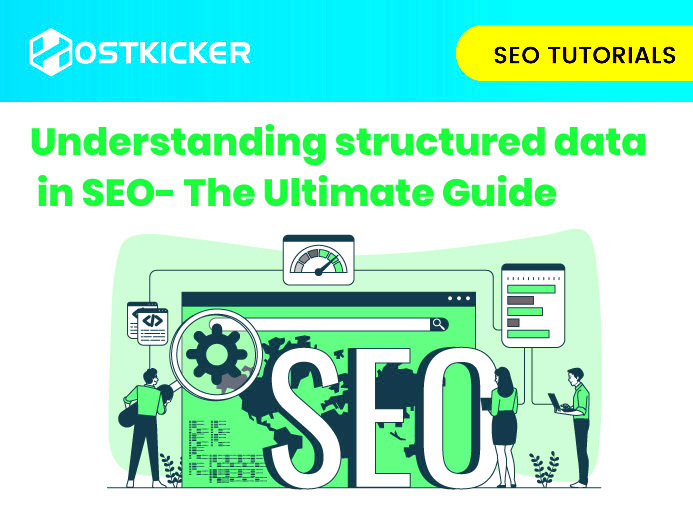Structured data is a powerful tool in SEO that helps search engines understand the content of your web pages better. It’s a standardized format for providing information about a page and its content. By using structured data, you can mark up elements like articles, events, products, and reviews in a way that search engines can easily interpret. This can improve your website’s visibility in search results and enhance how your pages are displayed in search engine snippets, which can ultimately lead to higher click-through rates.
Importance of Adding Structured Data to Custom Post Types

Custom post types (CPTs) are a great way to organize and display different types of content on your WordPress website. However, without structured data, search engines may struggle to understand and categorize this content correctly. Adding structured data to your custom post types ensures that search engines like Google can read and understand your content in the context of its type.
By marking up content on custom post types with structured data, you make it easier for search engines to classify your posts as a specific type of content, such as a product, review, or event. This helps you:
- Improve visibility: Structured data helps search engines identify important content, improving your chances of appearing in rich snippets and other enhanced search features.
- Enhance click-through rates: Rich snippets, such as star ratings, prices, or event dates, can make your page stand out in search results, encouraging more users to click.
- Increase accuracy: Search engines can understand your content’s intent better, reducing the risk of misclassification.
Therefore, structured data is essential for improving the performance of custom post types in search engines.
How Structured Data Improves Search Engine Visibility

Structured data significantly improves search engine visibility by helping search engines understand your content more effectively. When you add structured data, you provide search engines with context about your content that they might not be able to interpret otherwise.
One of the key ways structured data enhances visibility is through rich snippets. These are enhanced results in search engines that display additional information, like ratings, prices, and images. Rich snippets make your website stand out in the search results and can increase click-through rates. For example, an article with structured data may show up in the form of a carousel with images, while a product page may display ratings and pricing directly in the search result.
Here’s how structured data boosts your visibility:
- Increased search engine rankings: When search engines understand your content better, they are more likely to rank it higher because it is more relevant and accurate.
- Better user experience: Rich snippets and other enhancements provide more useful information to users directly in the search results, making it easier for them to find what they’re looking for.
- Enhanced engagement: By including features like ratings, images, and reviews, users are more likely to interact with your site because it’s more visually appealing and informative.
Incorporating structured data into your content helps to make your pages more visible, attractive, and relevant in search engine results, which can drive more organic traffic to your website.
Steps to Add Structured Data to Custom Post Types

Adding structured data to custom post types is a straightforward process, but it does require attention to detail. Here’s a simple step-by-step guide to get you started:
- Step 1: Choose the Right Structured Data Type
First, decide which schema you want to use based on the content of your custom post type. For example, if you’re working with a product post, you may want to use “Product” schema. You can find schema types at Schema.org. - Step 2: Install a Structured Data Plugin
There are many plugins available that help you add structured data to your WordPress site. Popular options include Yoast SEO, Schema Pro, and Rank Math. These plugins make it easy to integrate structured data into your custom post types without coding. - Step 3: Add Schema Markup to Your Template Files
If you’re comfortable with coding, you can manually add schema markup directly to your theme’s template files. This involves placing JSON-LD (JavaScript Object Notation for Linked Data) code into the header or footer of your custom post template. - Step 4: Test Your Markup
Before going live, use Google’s Rich Results Test or Structured Data Testing Tool to ensure your structured data is implemented correctly. These tools help identify errors and offer suggestions for improvement. - Step 5: Monitor and Update Regularly
Structured data should be updated when there are changes to the content of your custom post type. Monitor your data regularly to ensure everything remains accurate and up to date.
By following these steps, you can seamlessly integrate structured data into your custom post types and improve SEO performance.
Best Practices for Implementing Structured Data on Single Pages

When adding structured data to individual pages, it’s important to follow best practices to ensure the data is both accurate and beneficial for SEO. Here are some key guidelines:
- Choose the Right Schema Markup: Always choose the most specific and relevant schema type for your content. For example, use “Article” for blog posts, “Product” for ecommerce pages, and “Event” for event pages.
- Use JSON-LD Format: Google recommends using JSON-LD for structured data implementation. It’s easier to maintain and doesn’t interfere with the content of your page.
- Provide Complete and Accurate Information: Make sure the structured data you add is complete and accurate. This includes fields like the title, author, publish date, and relevant images for articles, or price and availability for products.
- Keep Markup Consistent with Page Content: The structured data should reflect what is actually on the page. For example, don’t mark up a product as available if it’s out of stock on the page itself. Mismatches between content and structured data can lead to penalties from search engines.
- Utilize Rich Snippets: Rich snippets, such as reviews, ratings, and images, can improve visibility and CTR in search results. Add structured data for these elements where possible.
By following these best practices, you’ll ensure that your structured data is as effective as possible in improving both user experience and SEO.
Common Mistakes to Avoid When Adding Structured Data
Adding structured data is a great way to improve your website’s SEO, but there are common mistakes that many people make. Avoiding these pitfalls will help you make the most of your structured data:
- Using Incorrect Schema Types: Always use the schema type that best fits your content. For example, using “Product” schema for a blog post or “Article” schema for a product page can confuse search engines and negatively impact your rankings.
- Overstuffing Structured Data: Adding too much unnecessary structured data can lead to errors. Stick to the most relevant information for your content—don’t try to mark up everything on the page.
- Ignoring Updates to Content: If your content changes (like a price update or a new product image), ensure the structured data is updated accordingly. Failing to update can result in mismatches between your content and markup.
- Not Testing Structured Data: Never skip the testing phase. Always use Google’s Rich Results Test or Structured Data Testing Tool to make sure your data is properly implemented. Testing helps to avoid errors and ensure that Google recognizes your structured data.
- Not Providing Full Data: Missing key elements in your markup, such as a missing image or price, can reduce the effectiveness of your structured data. Always make sure you include complete information.
Avoiding these mistakes will help you get the most out of your structured data, improving both the visibility and accuracy of your content in search results.
How to Test and Validate Structured Data
Once you’ve added structured data to your website, it’s crucial to test and validate it to ensure it works correctly and is being interpreted properly by search engines. Testing and validation help identify any issues before they can affect your search engine rankings or the appearance of rich snippets. Here’s how you can test and validate your structured data:
- Use Google’s Rich Results Test: This tool allows you to test individual URLs or code snippets to ensure your structured data is correctly implemented and eligible for rich results. It checks for errors and displays any detected issues, along with suggested fixes.
- Use the Structured Data Testing Tool: This is another Google tool designed to help you test your structured data. It provides more detailed information on how Google reads your structured data, including any errors or warnings.
- Check for Errors in Google Search Console: Google Search Console provides a structured data report, which displays any issues or errors detected in your markup. It’s a great tool for keeping an eye on your structured data performance and ensuring that everything is up to date.
- Test Multiple Pages: Don’t just test one page—check several pages across your website to ensure that structured data is implemented correctly site-wide. This will give you a better understanding of your structured data’s effectiveness.
Regular testing and validation of structured data are essential for maintaining SEO performance. Always resolve errors promptly to avoid any negative impact on your search engine rankings.
Frequently Asked Questions
Here are some common questions about structured data and its implementation:
- What is structured data?
Structured data is a way of marking up your website content so that search engines can better understand it. This can include information about products, articles, events, and more, typically in the form of schema markup. - Why should I use structured data?
Using structured data can help improve your visibility in search results, increase your chances of appearing in rich snippets, and ultimately enhance the user experience by providing more relevant and accessible information. - Is structured data required for SEO?
While structured data is not strictly required for SEO, it is highly recommended. It helps search engines index your pages more accurately, and can lead to rich snippets and enhanced search results that improve your click-through rates. - Can structured data improve my search rankings?
Structured data itself doesn’t directly influence rankings, but it can enhance the presentation of your pages in search results, potentially improving click-through rates and indirectly boosting SEO performance. - Can I add structured data to custom post types?
Yes, you can add structured data to custom post types. By doing so, you help search engines better understand the specific type of content you’re presenting, which can improve SEO and visibility in search results.
Conclusion
Adding structured data to your website is a simple yet powerful way to improve SEO and enhance your visibility in search results. It helps search engines understand your content better and can lead to richer, more attractive search snippets that increase click-through rates. By following best practices, testing your implementation regularly, and avoiding common mistakes, you can ensure that your structured data is effective and error-free.
Remember, structured data is a valuable tool in your SEO arsenal, but it’s just one part of a larger strategy. Consistently create quality content, optimize your website’s technical aspects, and track performance over time to achieve the best results. With structured data in place, your website will be better equipped to attract organic traffic and stand out in search engine results.



